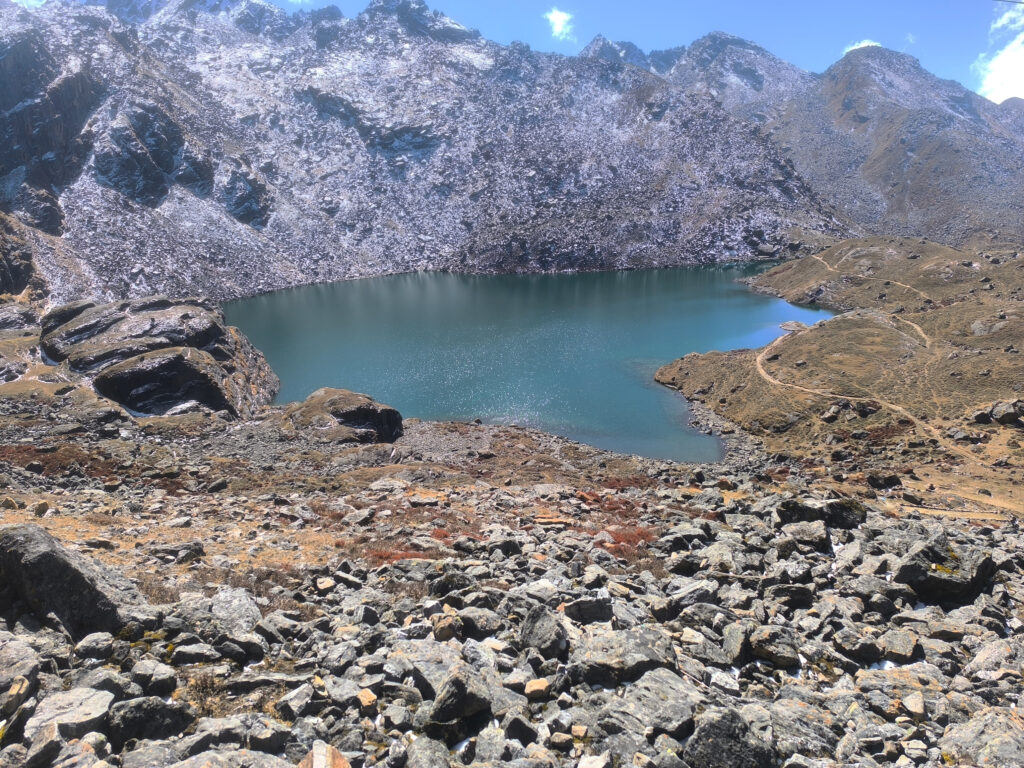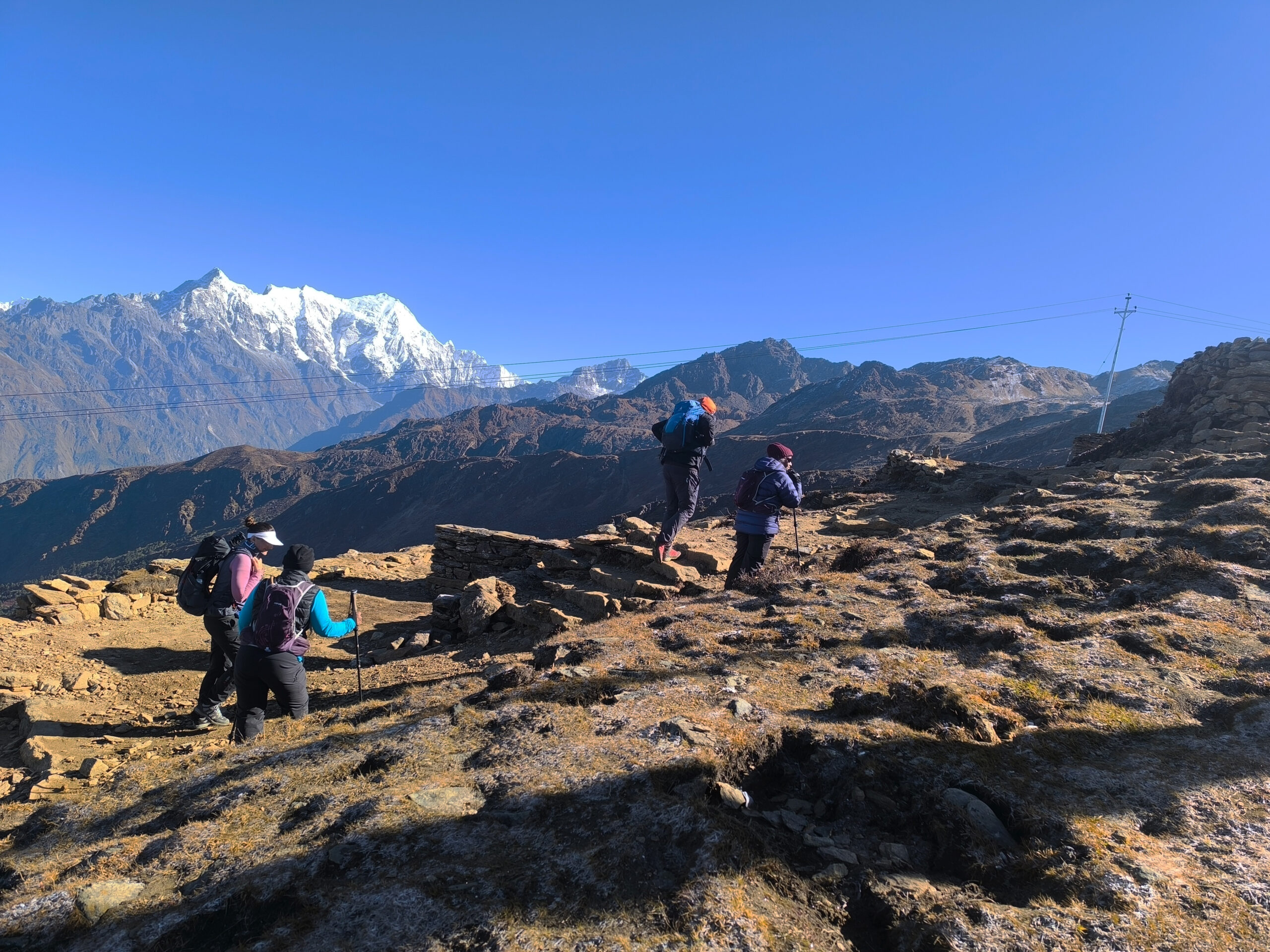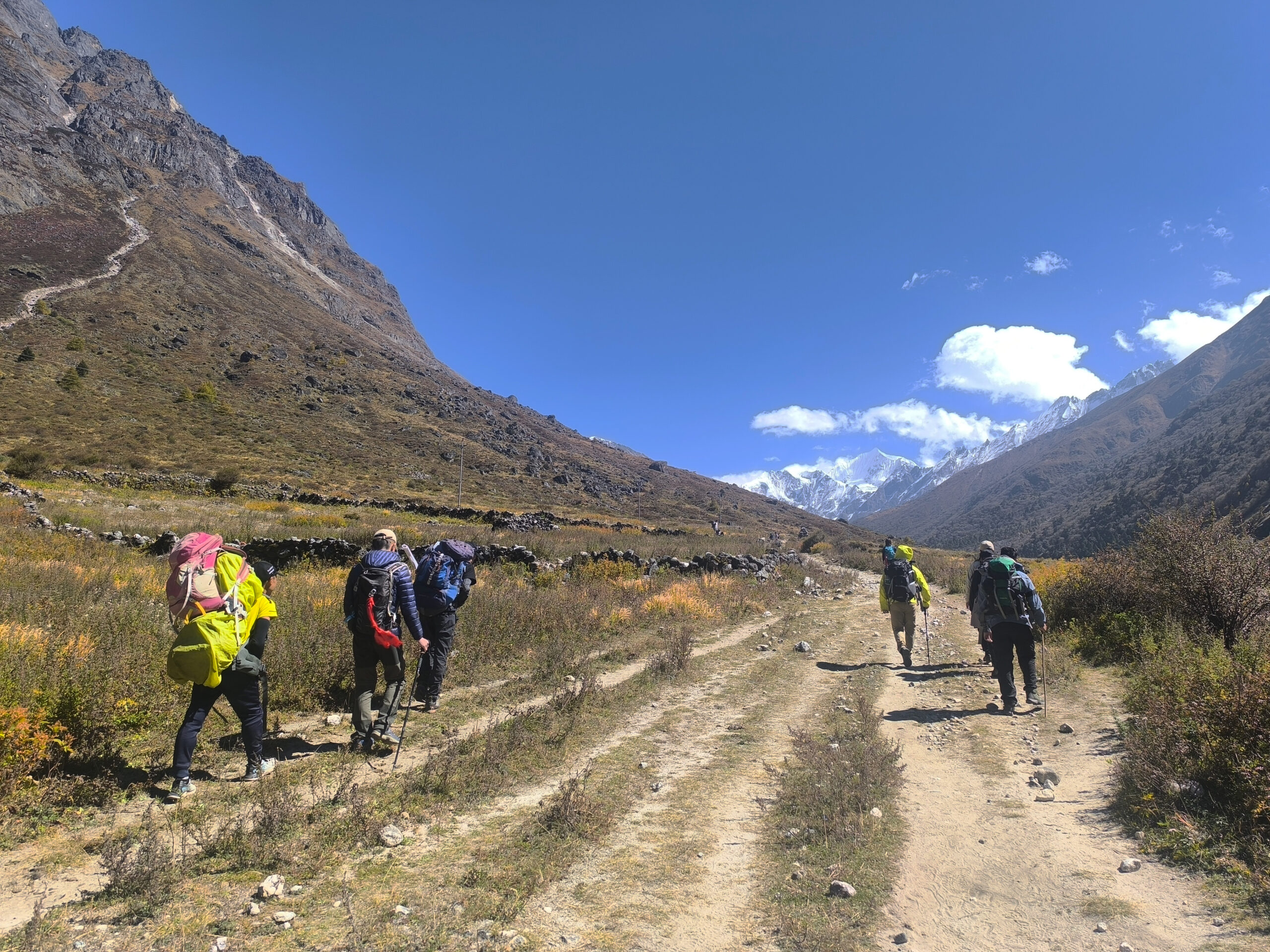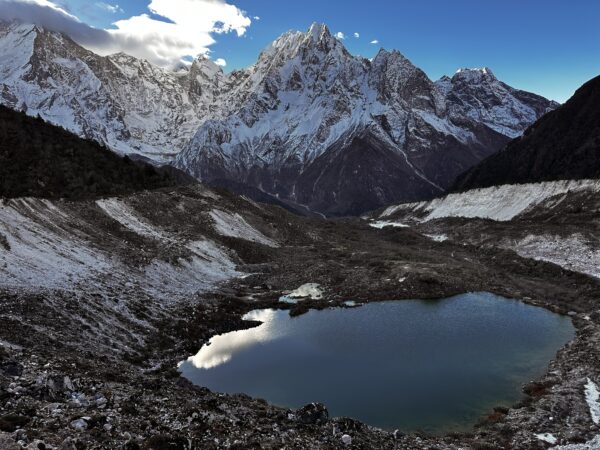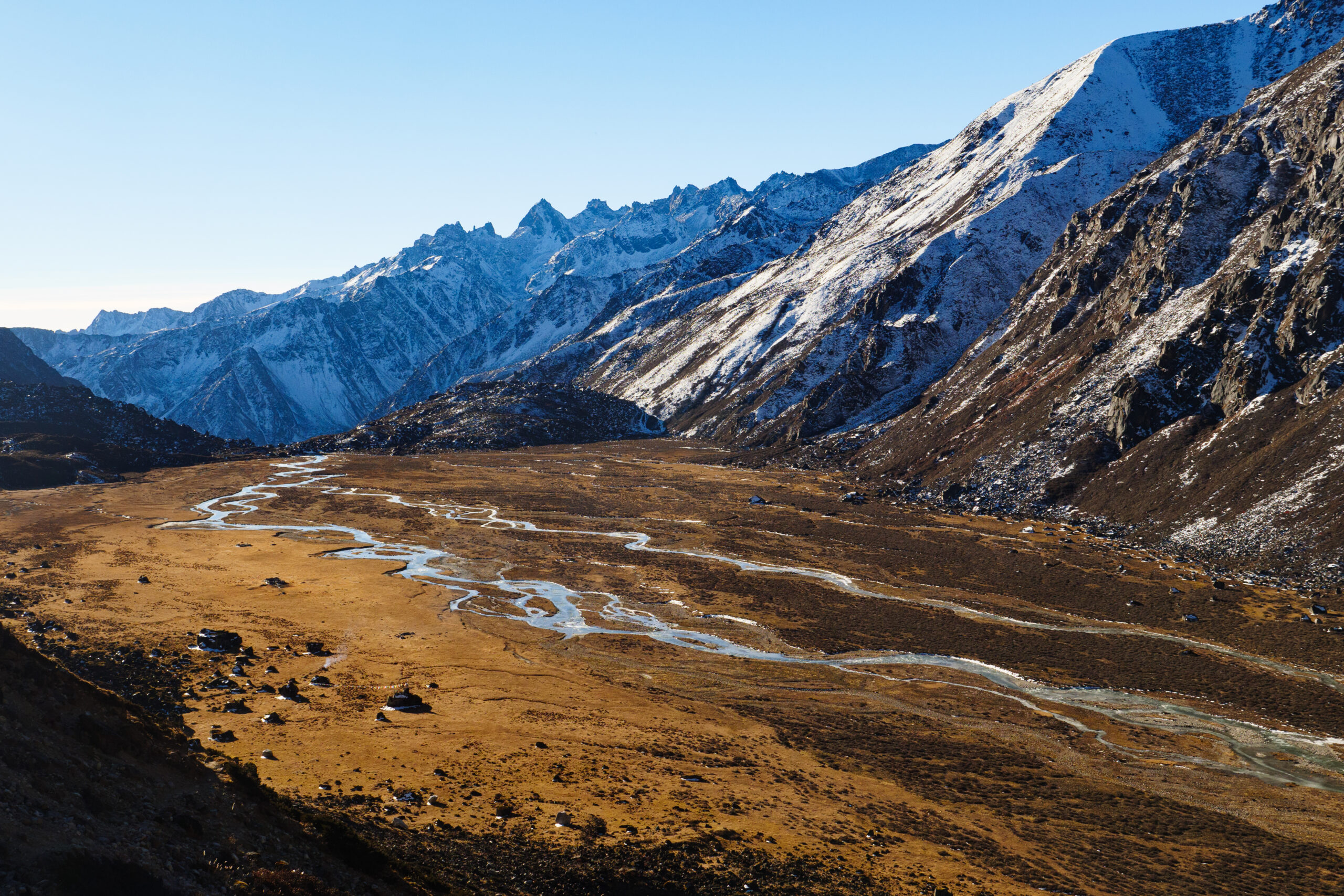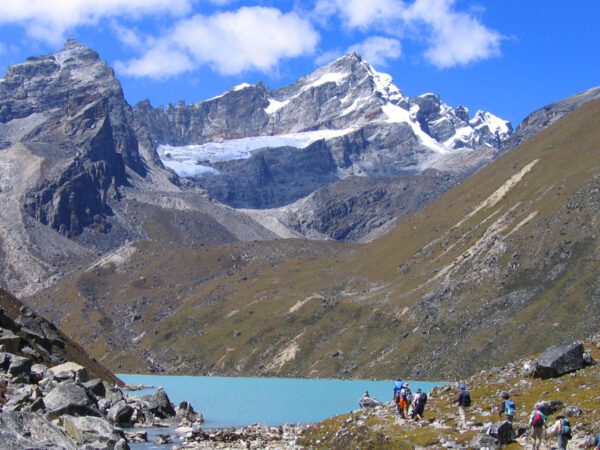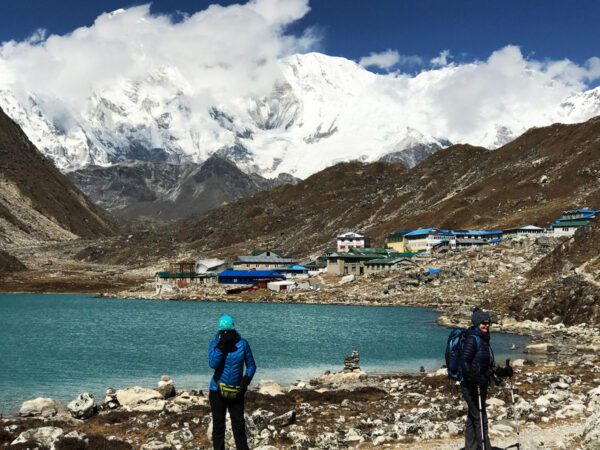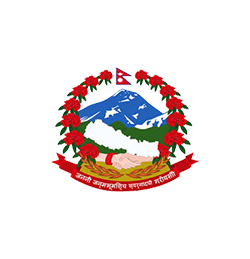Highlights
- Explore Kyanjin Gompa and indulge in its renowned cheeses.
- Experience the warm hospitality and rich Tamang and Tibetan culture of the valley.
- Visit the sacred Gosaikunda Lake, a revered pilgrimage site.
- Conquer the Gosaikunda La Pass at 4,610 meters for a breathtaking view.
- Enjoy the stunning valley landscapes and majestic mountain vistas.
Overview
The Langtang Gosainkunda Trek is a 16-day adventure that leads to the sacred Gosaikunda Lake, the scenic Langtang Valley, and a glimpse of the Helambu region at the journey’s end. This moderate trek reaches an altitude of approximately 4984 meters, offering breathtaking natural beauty and rich cultural experiences. It’s become a favorite among both local and international trekkers.
Located within Langtang National Park, Nepal’s first Himalayan national park, the trek showcases diverse wildlife, lush vegetation, and stunning mountain views. The park is home to endangered species such as the Red Panda, Himalayan Black Bear, Snow Leopard, Wild Dog, and Ghoral. The path weaves through dense forests of Rhododendrons, Oaks, and Junipers, past tranquil streams and alpine lakes, as well as picturesque pastures. If you’re fortunate, you might catch a glimpse of Red Pandas frolicking in the trees. Along the way, you’ll be treated to panoramic views of the majestic Langtang mountain range, with notable spots like Kyanjin Ri, Tserko Ri, Gosainkunda Lake, and Laurebina Pass offering perfect opportunities to take in the towering peaks.
This trek also provides a deep dive into the culture and lifestyle of the region’s indigenous communities. As you trek, you’ll pass through peaceful villages inhabited by Tamang, Sherpa, and Hyolmo people, with frequent sightings of Yaks. Tibetan Buddhism is the predominant religion in the area, and you’ll encounter numerous religious landmarks, including intricately carved mani walls, prayer flags, Chortens, and stupas, all reflecting the local devotion and spiritual heritage.
A unique aspect of the trek is a visit to the cheese factory in Kyanjin Gumba, founded in the 1950s by Swiss dairy expert Werner Schulthess. This factory has significantly influenced the development of the cheese-making culture in Nepal. You may wish to take an extra day in Kyanjin Gumba for a hike to Kyanjin Ri and Tserko Ri, where you’ll enjoy spectacular views of the surrounding peaks, and visit the cheese factory. In Gosainkunda, it’s worth spending an additional day to explore the surrounding lakes. If you’re trekking in August, don’t miss the Janai Purnima festival, which takes place on the full moon and draws Hindu pilgrims and shamans to the lake for a special ritual.
Our 16-day Langtang Gosainkunda Trek itinerary begins in Syabrubesi, located 122 kilometers north of Kathmandu, and concludes in Sundarijal. If you’d like to adjust the itinerary based on your fitness level, preferences, or available time, feel free to contact us. Our team will be happy to assist in creating a personalized plan that ensures a safe and unforgettable trekking experience.
Langtang Gosaikunda Trek difficulty
The Langtang Gosaikunda trek is considered a moderate adventure in the Himalayas, featuring a gradual ascent and steady elevation gain, making it ideal for proper acclimatization. We recommend this trek for travelers who are physically fit and capable of walking for 5-6 hours a day.
While previous trekking experience isn’t required, having some high-altitude experience can certainly make the journey easier. Trekking in the Himalayas involves more than just challenging terrain. Factors such as high altitude, limited amenities, and unpredictable weather add to the overall difficulty of the trek.
The Gosaikunda lake route is somewhat off the beaten path, with continuous ascents and descents through forests and pastures that might be strenuous for some. As a result, it’s crucial for participants to be in good health and maintain a high level of fitness.
Best Time to Trek Langtang Gosaikunda
The Best time for the Langtang Gosaikunda trek is from early March to late May, just before the monsoon season. However, the trails can be crowded as the weather is generally favorable during this period.
Another great time to trek is from early September to late December, as autumn offers cooler temperatures, making the mountainsides vibrantly green and the trek more enjoyable.
Winter temperatures are about 10 degrees colder than autumn, with early December being a good time for the trek. However, high passes such as the Laurabina Pass on the Gosaikunda trek are usually closed from late November to March due to snow.
During the peak seasons, the sky is crystal clear, offering you the opportunity to take in breathtaking views of the Himalayas.
Langtang Region Trek Options
- Langtang Valley Trek – 8 Days
- Tamang Heritage Trail Trek – 7 Days
Outline Itinerary
Day 01: Kathmandu Arrival
Day 02: Kathmandu free day or Sightseeing Yourself
Day 03: Drive from Kathmandu to Syabrubesi (1,550 m)
Day 04: Trek from Syabrubesi to Lama Hotel (2,380 m)
Day 05: Trek from Lama Hotel to Langtang Valley (3,430 m)
Day 06: from Langtang Village to Kyanjin Gompa (3,870m)
Day 07: Rest day in Kyanjin Gompa
Day 08: Trek back to the Lama Hotel (2,380 m)
Day 09: Trek from Lama Hotel to Thulo Syabru (2,200m)
Day 10: Trek from Thulo Syabru to Sing Gompa (3,250m)
Day 11: Trek from Sing Gompa to Gosaikunda Lake (4,320m)
Day 12: Hike from Gosaikunda to Gompte (3,300m)
Day 13: Trek from Gompte to Tharepati (3,780m)
Day 14: Trek from Tharepati to Chisopani
Day 15: Trek from Chisopani to Sundarijal, then private transport to Kathmandu
Day 16: Departure from Nepal
Langtang Gosaikunda Trek – 16 Days - Itinerary
Kathmandu Arrival
Upon arriving at Tribhuvan International Airport in Kathmandu, Nepal, our Adventure Himalayan Travels representatives will warmly welcome you. They will escort you to your hotel, where you'll receive a briefing about your daily itinerary over dinner in the evening.
Kathmandu free day or Sightseeing Yourself
This day serves as a buffer, allowing you to choose between a full day of rest to prepare for your upcoming trek or an incredible tour of Kathmandu Valley’s UNESCO World Heritage Sites.
If you opt for the tour, you’ll explore some of Nepal’s most revered spiritual landmarks. Visit Pashupatinath, a sacred Hindu temple cherished by Hindus and Buddhists worldwide, along with the iconic Buddhist shrines of Boudhanath and Swayambhunath. Tradition holds that walking clockwise around these sites brings good fortune, fulfills wishes, and even leads to spiritual liberation.
In the afternoon, you’ll have the opportunity to visit Patan, known for its exquisite fine arts and rich cultural heritage. Later, you'll meet your trekking guide, who will assist you with packing and ensuring you have all the necessary equipment for your journey ahead.
Drive from Kathmandu to Syabrubesi (1,550 m)
Today marks your third day in Nepal as you officially begin your trek to Langtang, Gosaikunda, and Helambu. Your journey starts with an 8 to 9-hour drive along winding roads, covering 117 km before reaching Syabrubesi.
Here, you'll spend your first night in a local tea house, warmly hosted by the locals.
Trek from Syabrubesi to Lama Hotel (2,380 m)
The trekking trail now veers off the main road, descending toward a suspension bridge that you'll cross before ascending into the wooded area of Doman (1,680 m), where the soothing calls of lophophorus, cuckoos, and other birds fill the air.
Continuing onward, you hike up through rocky moraines to Paira Lodge (1,810 m) and further to Bamboo Lodge (1,960 m). From there, the trail leads to Lama Hotel, where you'll settle in for the night.
Trek from Lama Hotel to Langtang Valley (3,430 m)
Today, the trekking trail departs from Lama Hotel, ascending through lush oak and maple forests before opening up to Langtang Village (3,430 m), where you'll be rewarded with a breathtaking 180-degree view of the Lirung ranges.
The journey continues through vibrant rhododendron and pine forests, passing through Gumanchok (2,800 m) and Ghora Tabela (2,790 m). After a final short uphill climb, you’ll arrive at Langtang Village, where you’ll settle in for the night.
from Langtang Village to Kyanjin Gompa (3,870m)
On this day, you'll continue trekking along a steep uphill path, passing through Sindhum and Yamphu at an altitude of 3,640 meters. After crossing Laja Khola, you'll reach a scenic viewpoint offering breathtaking views of Kyamjin Gompa and the stunning icefalls of Lirung and Kinshung.
From there, you'll descend to Kyanjin Gompa (3,870 meters), where you'll spend the night.
Rest day in Kyanjin Gompa
Kyanjin Gompa, the last permanent village in the region, holds historical and religious significance. It features a small gompa and a cheese factory, both worth exploring for a glimpse into local culture and tradition.
On this day, you'll take a well-deserved rest while exploring the upper valley or embarking on a day hike to Tsergo Ri (5,033m), a hill north of Kyanjin that serves as the base for your ascent.
The upper valley is surrounded by breathtaking snow-capped peaks, including the striking Langtang Lirung, Tibetan Dorje Lakpa, and many more waiting to be discovered. You'll spend another night in Kyanjin Gompa, soaking in the serene beauty of the Himalayas.
Trek back to the Lama Hotel (2,380 m)
In Kyanjin Gompa, there’s much to explore, offering 360-degree views of Langtang Lirung, the Kenga Himal ranges, and Genjempol, alongside stunning glaciers and yak pastures, all within a short span of time.
You’ll immerse yourself in the natural beauty and cultural richness with a brief hike to the cheese factory, the Buddhist monastery, and Tsergo Ri (5,033 m), before retracing your steps back to Lama Hotel for an overnight stay.
Trek from Lama Hotel to Thulo Syabru (2,200m)
Today's trail takes you down through Rimche and Bamboo Lodge, then continues past Paira Lodge and through a vibrant forest, heading towards the Langtang Khola.
After crossing the suspension bridge over the main Langtang River, you’ll reach Thulo Village at an elevation of 2,260 meters, where you'll spend the night.
Trek from Thulo Syabru to Sing Gompa (3,250m)
On the ninth day, the journey begins with an uphill climb past schools and gompas, leading to Durasagang (2,660 m), before continuing to a ridge at the top of Forpang Danda (3,190 m). From here, the trail winds past the Government Agriculture Office to Sing Gompa, a Buddhist monastery located at 3,330 m.
If time allows, you can visit the nearby Yak cheese factory, where organic cheese is produced. Feel free to taste as much as you like and take some home to enjoy!
Trek from Sing Gompa to Gosaikunda Lake (4,320m)
The 11th-day trek begins by passing the Sakyamuni stupa, following the sparkling waters of Saraswati Kunda and passing through Bhairab Kunda. From there, the trail ascends to the peaceful Gosaikunda (4,460m).
The stunning surroundings captivate nature lovers, and rest assured, you'll have the opportunity to fully experience the beauty of this sacred lake by spending the night at a nearby guesthouse.
Hike from Gosaikunda to Gompte (3,300m)
The trek on this day begins with a steep descent from the northern edge of Gosaikunda Lake, passing three smaller lakes before reaching the Gosaikunda Pass at 4,500m.
From there, the challenging path descends toward the National Park Post at Bhera Goth (4,240m) and Phedi (3,740m), continuing through dense bamboo forests until reaching Dupichaur (3,630m). The day concludes with an overnight stay in the local tea house at Ghopte (3,440m).
Trek from Gompte to Tharepati (3,780m)
Today's trek takes you through pine and juniper forests, followed by a challenging 2-hour ascent up a steep, rocky slope. The effort is rewarded with a stay at Tharepati, a breathtaking natural wonder, where you'll overnight in a cozy tea house.
Trek from Tharepati to Chisopani
On the fifteenth day of the trek, you will follow a forested ridge that ascends through Thodang Betini (2,260m) and Chipling (2,170m), before a steep downhill path leads you to Pati Bhanjyang (1,860m), a village rich in ethnic diversity.
From here, the trail continues its descent to Chisapani, located at 2,140m, where you can enjoy a breathtaking sunset over the snow-covered mountains.
Trek from Chisopani to Sundarijal, then private transport to Kathmandu
You’re nearing the end of your Langtang Gosaikunda trekking through dense rhododendron and oak forests. After crossing Borlang Bhanjyang (2,440m), you’ll make your way up to the Army Check Post, where your Shivpuri Entrance Permit will be verified.
From there, continue your hike to Sundarijal, where a private vehicle will take you back to Kathmandu, where you can enjoy a well-deserved celebratory Nepali dinner.
Departure from Nepal
On your final trek day in Kathmandu, Nepal, you’ll bid farewell to your travel team, expressing gratitude to your guides and porter for their support.
Three hours ahead of your scheduled flight, one of our team members will take you to the airport.
Thank you for choosing Everest Hikes! We look forward to welcoming you on another adventure soon!
Inclusions
What's included
- International Airport Pick-up and Drop
- Guide and Porter insurance with food and Accommodation
- Kathmandu to Shyburbasi by private Transports / Sundari Jal to Kathmandu
- 3 Nights (2 or similar category) hotel in Kathmandu Bed and Breakfast
- Meals (Breakfast, lunch, dinner) and Tea/coffee per day.
- TIMS (Trekkers’ Information Management System) Card and Langtang National Park Permits, Shivapuri National Park Permits
- Government Taxes, local taxes (if any)
- Kathmandu to Syabrubesi private jeep
- Licensed holder English Speaking trekking Guide
- Two trekkers =1 porter carrying a 20 kg Trekking route map
- Trip Accomplishment Certificate
- First Aid Kits
- Sleeping bag and Down Jacket, Duffel bag, and Trekking pole.
- Everest Hikes T-shirt
What's not included
- International Airfare
- Your Travel Insurance
- Rescue & Evacuation.
- Nepal Visa fee (mostly on arrival)
- Lunch and Dinner in Kathmandu
- Tips for Guide, Porter and Driver
- Drinks and beverage – bottled water / hot water / alcohol
- Chocolates and sweets

